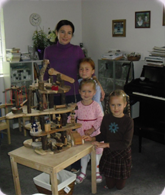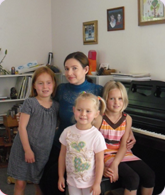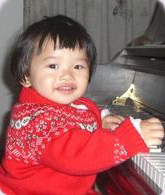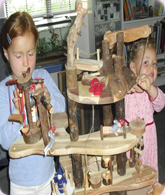BENEFITS OF IMAGINATIVE PLAY AND HANDWORK




OVERVIEW OF STEINER EDUCATION BY BOB HALE AND KAREN MACLEAN
"Joy and happiness in living, love for all existence, a power and energy for work, such are among the lifelong results of a right cultivation of the feeling for beauty and art". Rudolf Steiner
Most of the educational programs for young children try to teach concepts at too young an age. The child needs to be addressed through movement and imitation. The fantasy and play of the young child transform into the artistic imagination of the primary school child, the questioning of the teenager and the rational thinking of the young adult. We should have confidence that fantasy and imagination, which are natural to the young child, form a better foundation for later creative thinking than early learning. Creative thinking is more needed in our highly technological world than five-year-olds who can push buttons on a computer. Handwork is an important bridge in developing a connection between the child’s inner world and the outer world. Handwork stimulates their inventive powers and the ability to have creative ideas when facing the unknown. The child must develop judgment and a sense of form and space. Learning of this kind can have a real balancing effect on the child’s whole being. It awakens feelings in the child who is one-sidedly intellectual, stimulates activity in the weak-willed child, and awakens the thinking in the dreamy child. Children who learn to make practical things in an artistic way, for the benefit of others as well as themselves, will be able to form their lives and their relationships in a social and artistic way when they are older, thereby enriching their lives. The training through art in school is not for the purpose of producing artists but in order to educate young people for the art of living, based on disciplined exercise. The type of exercise and the time it is introduced are the important factors.
